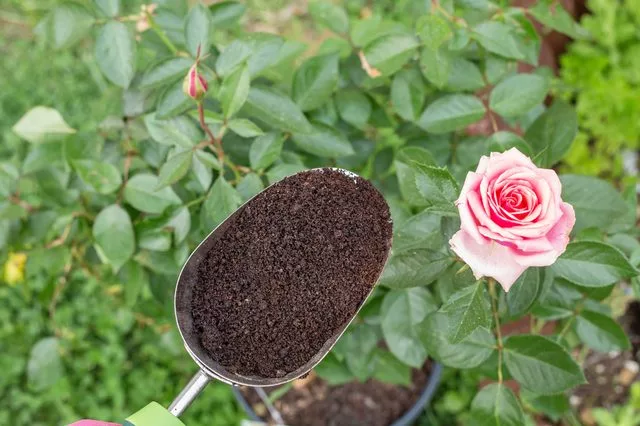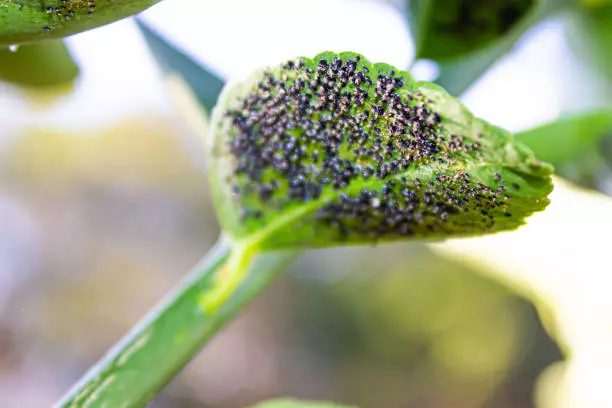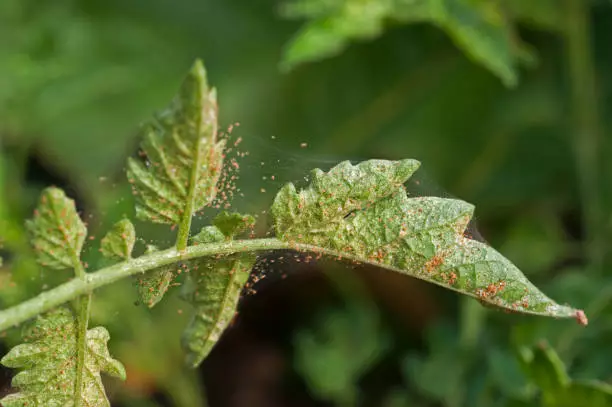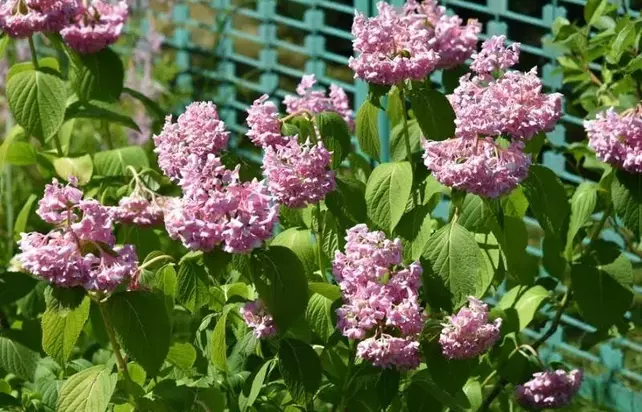Snake plants, also known as Sansevieria, are a popular houseplant due to their low maintenance and air-purifying properties. When the soil is too wet, the roots can become damaged and unable to absorb water properly, leading to brown tips. On the other hand, when the soil is too dry, the leaves can become dehydrated and develop brown tips as well.
Brown spots on snake plant leaves can be caused by a variety of factors, including fungal or bacterial infections, pest infestations, or environmental stressors such as low humidity or improper lighting. Identifying the cause of the brown spots is important in order to properly treat the issue and prevent it from spreading to other leaves.
Understanding Snake Plants
Snake plants, also known as Sansevieria or Sansevieria trifasciata, are a popular choice for indoor plants due to their beauty and ease of care. They are a type of succulent that is native to West Africa and can grow up to several feet tall.
One of the most common issues that snake plant owners face is brown tips and spots on their leaves. This can be caused by a variety of factors, including overwatering, underwatering, low humidity, or exposure to cold temperatures.
To prevent brown tips and spots on your snake plant, it is important to water it properly. Snake plants prefer to be slightly dry, so it is best to wait until the soil is completely dry before watering. Additionally, make sure to use well-draining soil and avoid letting the plant sit in standing water.
Another way to prevent brown tips and spots is to maintain proper humidity levels. Snake plants prefer a humid environment, so consider using a humidifier or placing a tray of water near the plant to increase humidity.
In conclusion, understanding how to care for your snake plant is key to preventing brown tips and spots on its leaves. By providing proper watering and humidity, you can ensure that your snake plant remains healthy and beautiful for years to come.
Common Issues with Snake Plants
Snake plants are popular houseplants known for their durability and low maintenance. However, they are not invincible and can suffer from a few common issues. Here are some of the most frequent problems you may encounter with your snake plant:
Brown Tips
Brown tips are a common issue with snake plants and can be caused by several factors. The most common cause of brown tips is overwatering, which can lead to root rot. Other possible causes include underwatering, exposure to cold temperatures, or low humidity.
To prevent brown tips, make sure to water your snake plant only when the top inch of soil is dry. Also, avoid exposing your plant to cold drafts or direct sunlight. If your snake plant has brown tips, trim them with a pair of clean scissors and adjust your watering schedule accordingly.
Brown Spots
Brown spots on snake plants can be a sign of fungal or bacterial infections. These infections can be caused by overwatering, poor drainage, or high humidity. Brown spots can also be caused by pests such as spider mites or mealybugs.
To prevent brown spots, make sure to water your snake plant only when the top inch of soil is dry. Also, ensure that your plant has proper drainage and is not sitting in standing water. If your snake plant has brown spots, remove the affected leaves and treat the plant with a fungicide or insecticide if necessary.
Yellowing and Browning
Yellowing and browning of snake plant leaves can be caused by several factors, including overwatering, underwatering, exposure to cold temperatures, or low humidity. Yellowing and browning can also be a sign of nutrient deficiencies.
To prevent yellowing and browning, make sure to water your snake plant only when the top inch of soil is dry. Also, ensure that your plant is not exposed to cold drafts or direct sunlight. If your snake plant is showing signs of nutrient deficiencies, consider fertilizing it with a balanced, water-soluble fertilizer.
Conclusion
In conclusion, snake plants are relatively easy to care for but can suffer from a few common issues. By following the tips outlined above, you can keep your snake plant healthy and thriving. Remember to monitor your plant regularly and adjust your care routine as needed to prevent and treat any issues that may arise.
Watering and Moisture Concerns
Overwatering and Underwatering
Proper watering is crucial for the health of your snake plant. Overwatering can lead to root rot and brown tips on the leaves. On the other hand, underwatering snake plants can cause the leaves to develop brown spots and dry out. It is important to find the right balance between the two.
To avoid overwatering, make sure the soil is completely dry before watering again. You can use a moisture meter to check the moisture level of the soil. If the soil is still moist, wait a few more days before watering. Similarly, if you notice that the leaves are drooping and the soil is completely dry, it’s a sign that the plant is underwatered and needs to be watered immediately.
Effect of Tap Water
Tap water can also affect the health of your snake plant. Chlorinated water or over-chlorinated water can damage the roots and cause brown tips on the leaves. It is best to use filtered or distilled water for your snake plant. If you don’t have access to filtered or distilled water, you can leave tap water out overnight to allow the chlorine to evaporate.
Importance of Moisture Level
Maintaining consistent moisture levels is important for the health of your snake plant. Inconsistent watering can cause stress to the plant and lead to brown spots on the leaves. Regular watering, about once a week, is recommended for snake plants. However, make sure to adjust the watering schedule based on the humidity and temperature of your environment.
In summary, proper watering and moisture level are crucial for the health of your snake plant. Avoid overwatering and underwatering by finding the right balance. Use filtered or distilled water to avoid the negative effects of tap water. And maintain consistent moisture levels by watering regularly and adjusting based on your environment.
Light and Temperature Factors
Role of Sunlight
Snake plants prefer bright, indirect light, but they can also tolerate low-light conditions. Direct sunlight can cause brown tips on the leaves, so it’s best to avoid exposing them to excessive sunlight.
Indoor vs Outdoor
Indoor snake plants are less likely to experience temperature stress than outdoor plants. Outdoor plants are more susceptible to sunburn and cold stress, which can cause brown tips and spots on the leaves.
Temperature Stress
Snake plants prefer temperatures between 60-85°F (15-29°C). Extreme temperatures can cause brown tips and spots on the leaves. Cold stress can cause the leaves to turn yellow and eventually die, while excessive heat can cause the leaves to curl and become dry.
It’s important to keep snake plants away from drafts and air conditioning vents, as sudden temperature changes can also cause stress.
In summary, providing the right amount of light and maintaining a consistent temperature is crucial for the health of snake plants.
Soil and Fertilizer Requirements
Choosing the Right Soil
Choosing the right soil is essential for the health of your snake plant. Snake plants prefer well-draining soil that is slightly acidic to neutral. A good potting mix for snake plants should contain a mix of peat moss, perlite, and sand. Avoid using heavy soils that retain too much moisture, as this can lead to root rot.
Fertilizer Use and Overuse
Snake plants are not heavy feeders, and over-fertilization can lead to brown tips and spots on the leaves. If plants have been repotted in the fall into a soil containing fertilizer, they probably will not need more fertilizer until the following spring. When using fertilizers, use enough of the solution to wet the entire soil surface, but avoid overuse. Excess fertilizer can lead to a buildup of salts in the soil, which can damage the roots of the plant.
When choosing a fertilizer for your snake plant, look for a balanced fertilizer that contains equal amounts of nitrogen, phosphorus, and potassium. A good fertilizer for snake plants should have an NPK ratio of 10-10-10 or 20-20-20. Apply fertilizer once a month during the growing season (spring and summer), and reduce the frequency during the dormant season (fall and winter).
Overall, snake plants are relatively easy to care for, and with the right soil and fertilizer, they can thrive for many years.
Pests and Diseases
Identifying Pests
Snake plants are generally resistant to pests, but they can still be affected by a few common insects, such as mealybugs, spider mites, and aphids. Mealybugs are small, white, powdery insects that can be found on the leaves, stems, and roots of the plant. Spider mites are tiny, red or brown pests that can cause webbing on the leaves. Aphids are small, pear-shaped insects that can be found on the undersides of the leaves.
Common Diseases
Brown tips and spots on snake plants can be caused by a variety of fungal diseases, including southern blight, red leaf spot, and rust. These diseases can cause the leaves to turn yellow, brown, or black and can eventually lead to the death of the plant. Overwatering and poor drainage can also contribute to the development of fungal diseases.
Treatment Options
If you notice pests on your snake plant, you can try removing them by hand or using an insecticide. For fungal diseases, you can apply a fungicide or neem oil to the affected areas. It’s important to isolate the affected plant to prevent the spread of the disease to other plants.
To prevent pests and diseases, make sure to keep your snake plant in a well-draining pot and avoid overwatering. You can also use a soil mix that includes perlite or sand to improve drainage. Regularly inspect your plant for signs of pests or diseases and take action promptly if you notice any issues.
Sclerotium rolfsii is a rare disease that can affect snake plants, causing rotting of the roots and stem. If you suspect your plant has this disease, it’s best to remove it immediately to prevent the spread to other plants.
Plant Care and Maintenance
Pruning and Cutting
To keep your snake plant healthy, you should prune and cut any brown or yellow leaves as soon as you notice them. This will prevent the spread of any diseases or pests that may be affecting your plant. You can use a pair of sharp, clean scissors to cut the leaves at the base of the plant. Make sure to sterilize your scissors with rubbing alcohol before and after each cut to prevent the spread of any bacteria.
Repotting Snake Plants
Repotting your snake plant is important to keep it healthy and thriving. If you notice your plant is starting to look stressed or root-bound, it may be time to repot. To repot your snake plant, follow these steps:
- Choose a pot that is one size larger than the current pot your plant is in.
- Fill the bottom of the pot with a layer of gravel or rocks for drainage.
- Add fresh potting soil to the pot, leaving enough room for the plant’s roots.
- Carefully remove the plant from its current pot and loosen any tangled roots.
- Place the plant in the new pot and fill in any gaps with additional potting soil.
- Water the plant thoroughly and allow excess water to drain out of the bottom of the pot.
Remember to avoid overwatering your snake plant, as this can lead to root rot and other plant stress. It’s best to let the soil dry out slightly between waterings.
Conclusion
In conclusion, brown tips and spots on snake plants are common issues that can be caused by a variety of factors. By understanding the causes and taking appropriate steps, you can prevent and treat these issues.
Here are some key takeaways:
- Brown tips are often caused by underwatering, low humidity, or direct sunlight. Make sure to water your snake plant regularly, keep it in a humid environment, and provide it with indirect sunlight.
- Brown spots can be caused by overwatering, fungal or bacterial infections, or pests. Avoid overwatering your snake plant and make sure to treat any infections or pests promptly.
- Sansevieria trifasciata, also known as snake plant, is a great plant for phytoremediation and can help remove acid rain from the environment.
- If you notice brown tips or spots on your snake plant, trim off the affected leaves or treat the underlying cause to prevent further damage.
Overall, snake plants are hardy and resilient plants that can thrive in a variety of environments. With proper care and attention, you can keep your snake plant healthy and vibrant for years to come.
Frequently Asked Questions
How to treat fungus on snake plant
If you notice fungus on your snake plant, it’s important to act quickly to prevent it from spreading. One effective treatment is to use a fungicide that is specifically designed for houseplants. Be sure to follow the instructions on the label carefully, and avoid over-watering your plant, as excess moisture can contribute to fungal growth.
Can I cut the brown spots of the snake plant?
If you notice brown spots on your snake plant, you may be able to remove them by cutting off the affected leaves with a sharp, clean pair of scissors or pruning shears. Be sure to sterilize your cutting tool before and after use to prevent the spread of disease.
What does an overwatered snake plant look like?
An overwatered snake plant may have yellowing leaves, brown spots, or a soft, mushy texture. The soil may also be waterlogged and have a foul odor. To prevent overwatering, allow the soil to dry out between waterings, and be sure to use a well-draining potting mix.
What is the fungal disease on my snake plant?
Fungal diseases on snake plants can present as brown spots, yellowing leaves, or white, powdery growth on the leaves or soil surface. Treatment options include removing affected leaves, applying a fungicide, and improving air circulation around the plant to prevent moisture buildup.
How do you get rid of brown spots on snake plants?
To get rid of brown spots on snake plants, first identify the cause of the problem. If the spots are caused by overwatering or fungal disease, adjust your watering habits and treat with a fungicide as needed. If the spots are caused by physical damage or pests, remove the affected leaves and treat the plant accordingly.



